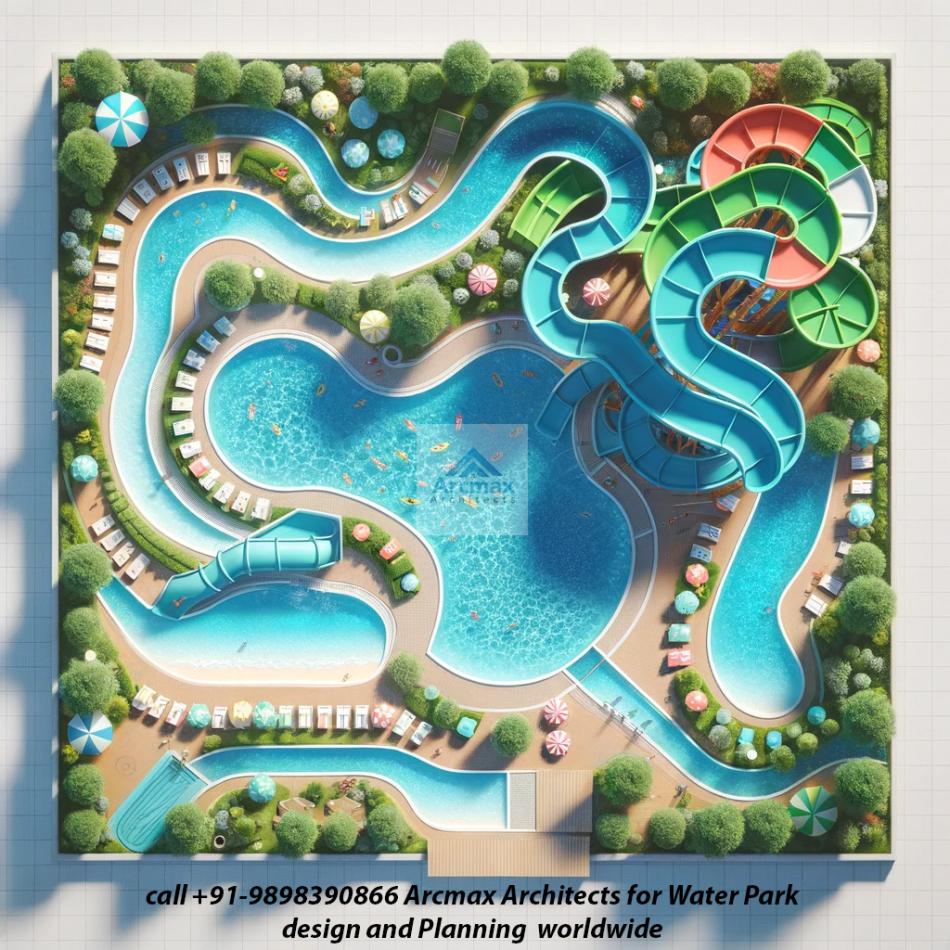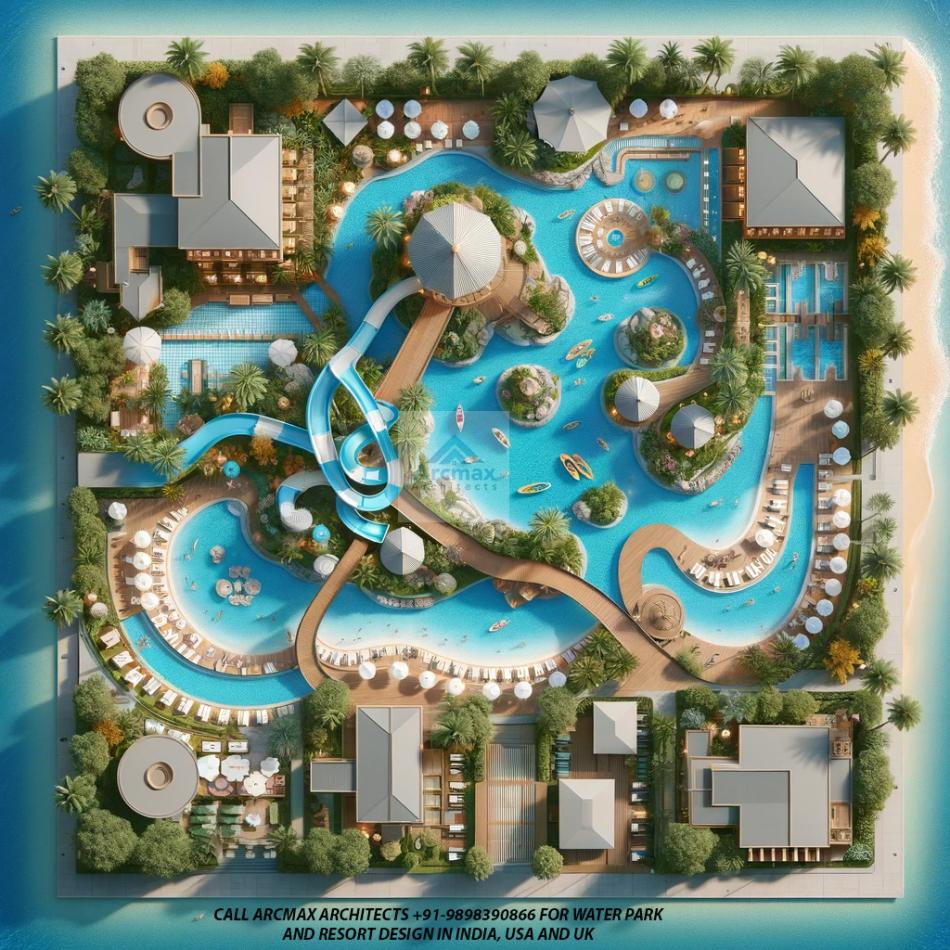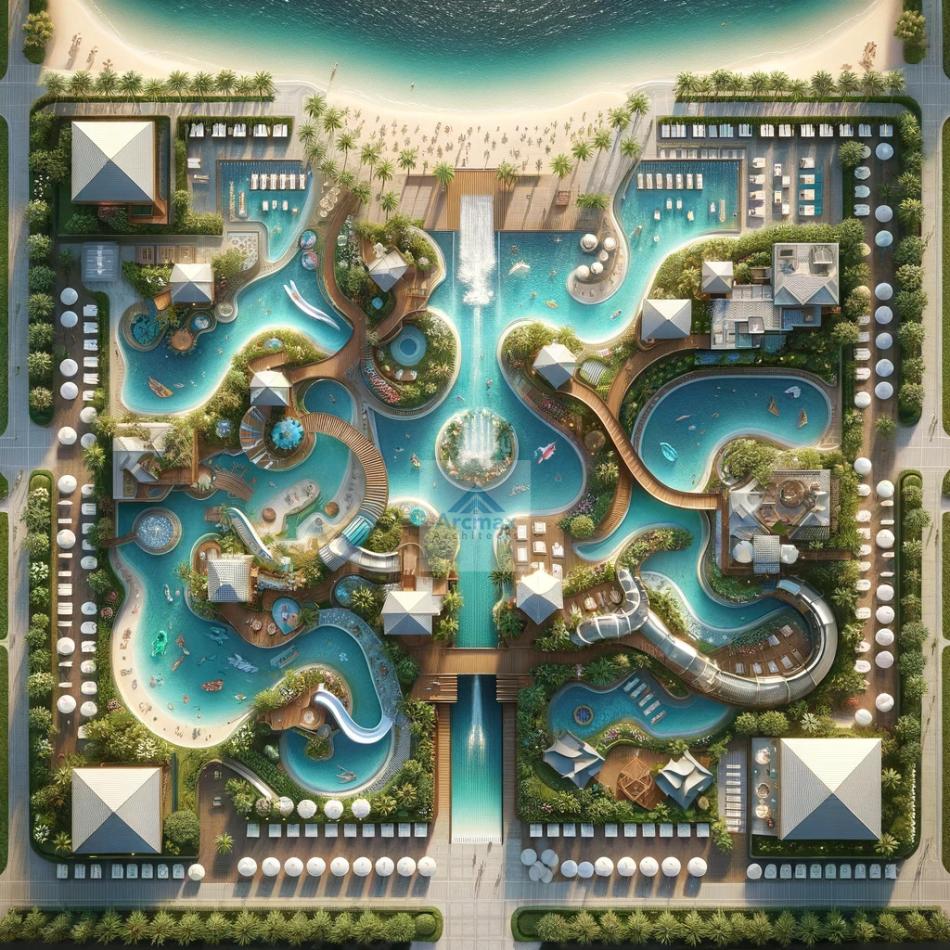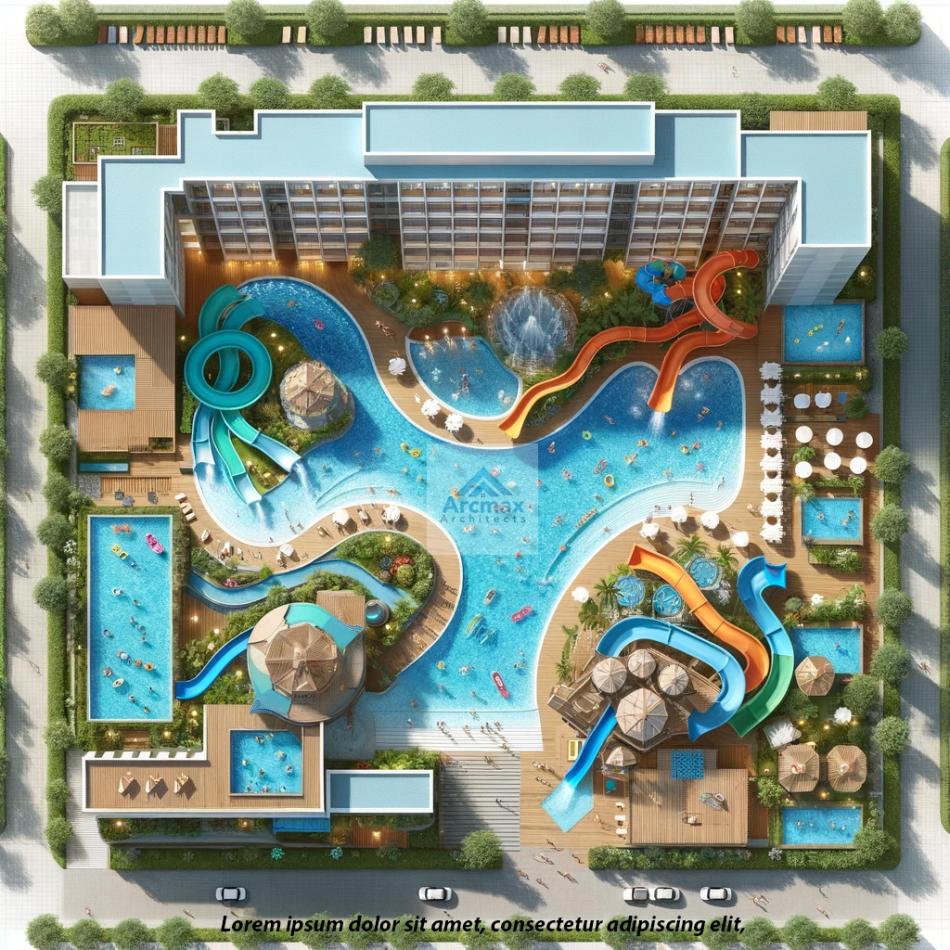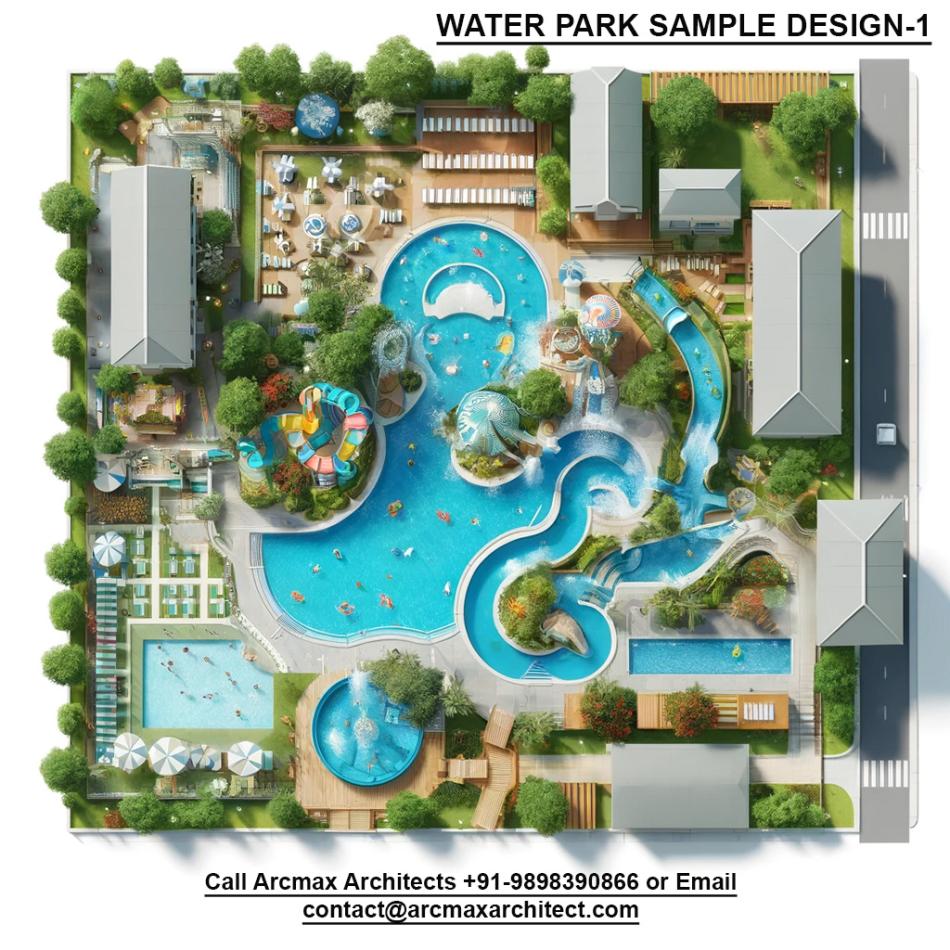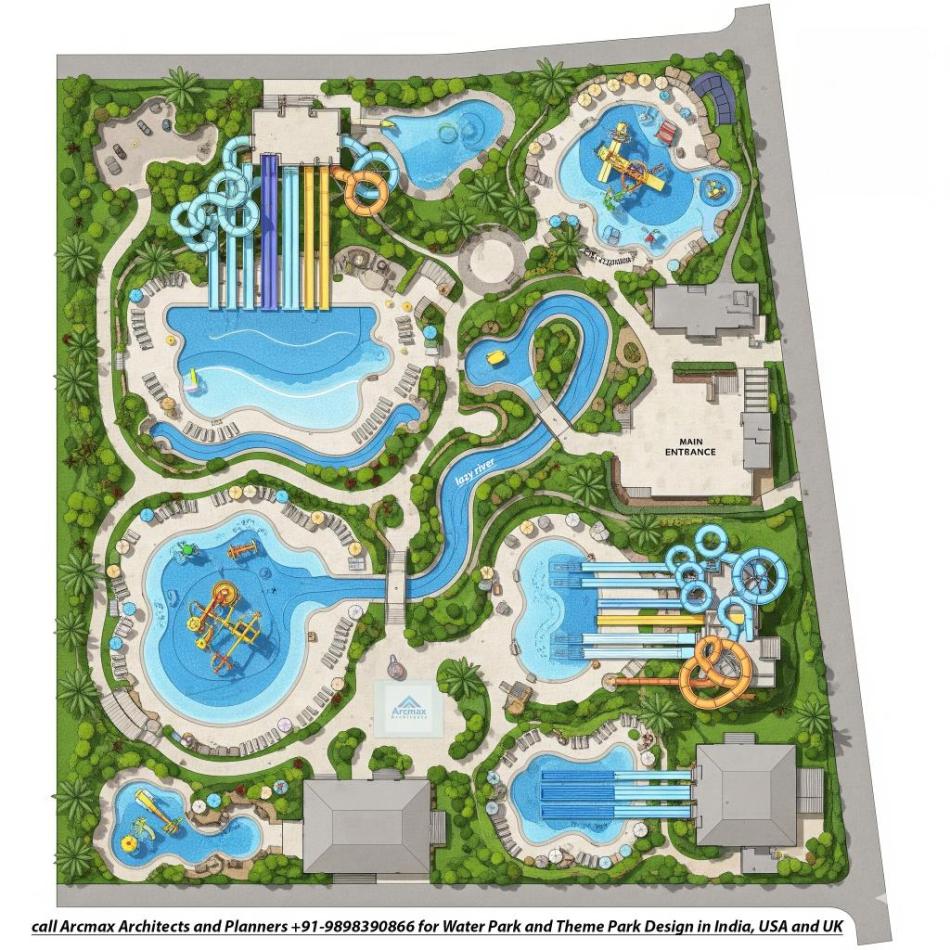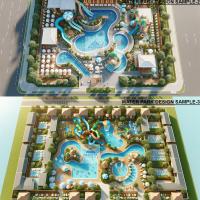Bakeri City, Pincode: 380015 Ahmedabad, Gujarat, India,
244 Madison Avenue, New York, United States
Our Client






Water park design and Master Planning in India, USA and UK
Master planning a water park involves a comprehensive approach that combines creativity, engineering, environmental management, and operational efficiency to create a venue that is safe, enjoyable, and financially successful. Here is a guide to the content that should be considered and included in the master planning process for water park design:
1. Vision and Concept Development
- Theme and Story: Establish a unique theme or story that will set the water park apart, guide the design of attractions, and enhance the guest experience.
- Target Audience: Define the primary and secondary target audiences (families, teenagers, young adults) to tailor the park’s attractions, amenities, and services.
2. Site Analysis and Selection
- Location: Consider accessibility, proximity to target markets, and connectivity with public transportation.
- Topography and Natural Features: Assess the land for potential challenges and opportunities, incorporating natural landscapes into the design when possible.
- Climate Considerations: Design for seasonal variations, potential weather disruptions, and the comfort of guests and staff.
3. Attraction and Facility Planning
- Attraction Mix: Plan a balanced mix of water attractions (slides, wave pools, lazy rivers, children's areas) to cater to all age groups and thrill levels.
- Capacity and Flow: Estimate guest capacity and design paths, queues, and attractions to optimize flow and reduce wait times.
- Amenities: Include essential guest amenities like changing rooms, lockers, restrooms, and dining facilities.
- Support Facilities: Plan for operational needs, including maintenance buildings, first aid stations, and administrative offices.
4. Safety and Accessibility
- Safety Protocols: Incorporate the latest safety standards and technologies for rides, water treatment, and guest supervision.
- Accessibility: Ensure the park is welcoming and accessible to guests with disabilities, offering inclusive attractions and facilities.
5. Environmental Sustainability
- Water Management: Implement systems for water recycling, filtration, and disinfection to minimize waste and environmental impact.
- Energy Efficiency: Use renewable energy sources and energy-efficient technologies in operations and attractions.
6. Guest Experience Enhancement
- Landscaping and Theming: Use landscaping, thematic elements, and architectural design to create immersive environments.
- Technology Integration: Incorporate technology to enhance guest convenience, such as mobile apps for ticketing, food ordering, and navigation.
7. Operational Planning
- Staffing and Training: Develop plans for hiring, training, and managing staff to ensure high levels of service and safety.
- Maintenance and Upkeep: Establish routines for daily operations, regular maintenance, and seasonal refurbishment to keep the park in top condition.
8. Financial Analysis and Feasibility
- Budgeting: Outline initial investment costs, including land acquisition, construction, and marketing, as well as ongoing operational expenses.
- Revenue Projections: Estimate revenue from admissions, food and beverage, retail, and other services to assess financial viability.
9. Marketing and Branding Strategy
- Branding: Develop a strong brand identity that reflects the park's theme and appeals to the target audience.
- Marketing Plan: Create a marketing plan to promote the park before and after opening, using traditional media, social media, and partnerships.
10. Phased Development and Expansion
- Initial Launch: Plan for a phased opening, starting with core attractions to generate early revenue and feedback.
- Future Expansion: Reserve space for future expansions and new attractions to keep the park fresh and encourage repeat visits.
Master planning is a critical stage in the development of a water park, requiring a multidisciplinary approach to create a destination that is not only entertaining and engaging but also operationally sound and financially sustainable.

